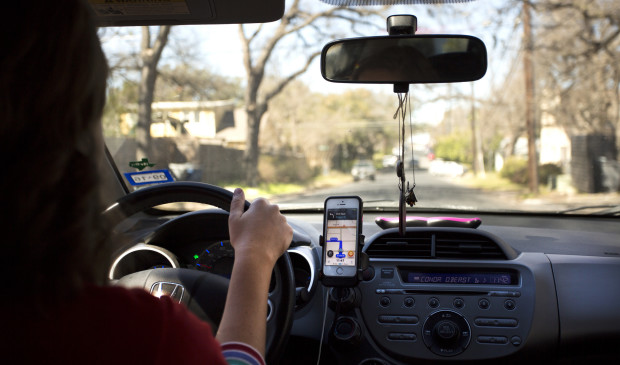The tricky art of linking Uber and Lyft to DWI drop
Friday, April 22, 2016 by
Audrey McGlinchy, KUT In both sides of the tug of war over what rules should govern ride-hailing companies such as Uber and Lyft in Austin, everyone seems to agree that having more transportation options is a potential antidote for DWIs.
“We are safer in this community if we have ride-share companies operating at scale,” Mayor Steve Adler told the Austin Monitor in February. “Our police chief has told us that having Uber and Lyft in our community takes drunk drivers off the road to a significant degree.”
But while it seems that both sides can agree on a correlation between a drop in local DWIs and the arrival of ride-hailing companies (which legally began local operations in 2014, but illegally began a few months prior), it’s much harder to prove causation – though the suggestion is there.
One advertisement from the Uber- and Lyft-funded political action committee Ridesharing Works for Austin contends that a vote for Prop 1 will help “prevent drunk driving in Austin and surrounding neighborhoods.” Another reads, “Since Uber and Lyft came to Austin, drunk driving-related crashes are down 18%.”
Austin Police Lt. Blake Johnson demonstrated for the Monitor the near impossibility of proving that these two things are related.
“Unless you had a poll-taker riding with every Uber driver when they picked up an intoxicated passenger, (one) who polled them directly – ‘Was this the deciding factor for you not to drink and drive?’ – and recorded it accurately, could you truly say that’s the fact?” he asks.
When pressed, Ridesharing Works agrees – and then quickly moves on.
“While we know that correlation doesn’t directly imply causation, I can personally attest to the culture shift in our community,” Huey Rey Fischer, deputy outreach director for the PAC, told the Monitor. “We can investigate it and apply a lot of scrutiny, or we can just acknowledge that this has been a tremendous culture shift for our community.”
According to a letter sent to City Council by Travis County Sheriff Greg Hamilton back in December, DWI arrests fell 16 percent in 2014. In the letter, he states that those numbers came from Austin Police Department statistics – but the Monitor was unable to replicate this finding using raw data from the department. As of press time, no one was available to explain how this figure was reached.
In that same letter to Council, the sheriff also wrote that DWI arrests increased from 2011 to 2013. According to APD data, DWI arrests jumped from 5,065 to 6,369 in that time. Then, in 2015, APD made only 5,844 DWI arrests. The overall trend appears to be downward. But go back a decade, and these numbers persistently seesaw.
In 2005, Austin had 5,896 DWI arrests (close to 2015 numbers). One argument for this low number is population size – the city had fewer residents 10 years ago than it does now. But DWIs peaked in 2008 with 7,146 arrests, and then they bottomed out again in 2011 with 5,065 arrests – roughly three years before ride-hailing hit the streets.
No one can predict how DWIs will play out in the coming year. In January of this year, APD made the second-highest number of DWI arrests (566 arrests) than it had in any one month since the start of 2014 (eclipsed only by March 2014, which saw 592 DWIs) – the year that Austin’s relationship with ride-hailing began.
Math aside, there are a number of other factors at play when it comes to DWI arrests – some of which could hint at help from Uber and Lyft. APD bolstered its DWI enforcement in mid-2015 by adding a third unit. That addition allowed the department to patrol for intoxicated drivers seven nights a week. More cops on the road more often should lead to a jump in arrests. But instead, APD’s Johnson said arrests have dropped by 2 percent from year-to-date.
Regardless, he and Police Chief Art Acevedo say that having more transportation options – such as Uber and Lyft – is clearly a good thing.
“If we take away the TNCs here and in other cities, it definitely will impact DWIs,” Acevedo told Council members in December. “There’s no argument about it.”
It’s just difficult to pin a number to it.
This story was produced as part of the Austin Monitor’s reporting partnership with KUT.
Photo by Miguel Gutierrez Jr./KUT News.
You're a community leader
And we’re honored you look to us for serious, in-depth news. You know a strong community needs local and dedicated watchdog reporting. We’re here for you and that won’t change. Now will you take the powerful next step and support our nonprofit news organization?



